The main issue here would be calling the dcast function i.e. dcast is available in data.table and reshape2 packages. If the data is data.table, it calls the data.table::dcast instead of the reshape2::dcast, but if it is a data.frame, it may call reshape2::dcast (assuming both are loaded). With data.table::dcast,
value.var - ..., Cast multiple value.var columns simultaneously by passing their names as a character vector.
whereas in ?reshape2::dcast
value.var - name of column which stores values, see guess_value for default strategies to figure this out.
i.e. it can take only a single column in value.var
-testing
> reshape2::dcast(dat1,
id1+id2 ~ grade + year + category,
value.var = c("%level1", "%level2"))
Error in if (!(value.var %in% names(data))) { :
the condition has length > 1
whereas
dcast(as.data.table(dat1),
id1+id2 ~ grade + year + category,
value.var = c("%level1", "%level2"))
Key: <id1, id2>
id1 id2 %level1_3_2016_A %level1_3_2016_B %level1_3_2017_A %level1_3_2017_B %level2_3_2016_A %level2_3_2016_B %level2_3_2017_A %level2_3_2017_B
<num> <num> <num> <num> <num> <num> <num> <num> <num> <num>
1: 1 101 58 56 57 53 33 20 34 19
2: 2 102 54 49 58 43 32 19 32 20
data
dat1 <- structure(list(id1 = c(1, 1, 1, 1, 2, 2, 2, 2), id2 = c(101,
101, 101, 101, 102, 102, 102, 102), grade = c(3, 3, 3, 3, 3,
3, 3, 3), year = c(2016, 2017, 2016, 2017, 2016, 2017, 2016,
2017), category = c("A", "A", "B", "B", "A", "A", "B", "B"),
`%level1` = c(58, 57, 56, 53, 54, 58, 49, 43), `%level2` = c(33,
34, 20, 19, 32, 32, 19, 20)), class = c("tbl_df", "tbl",
"data.frame"), row.names = c(NA, -8L))

